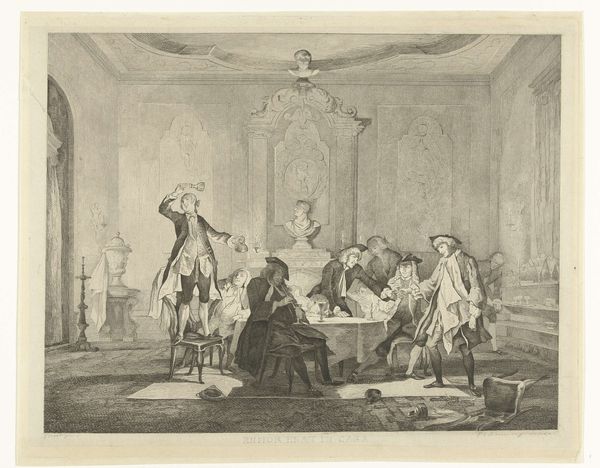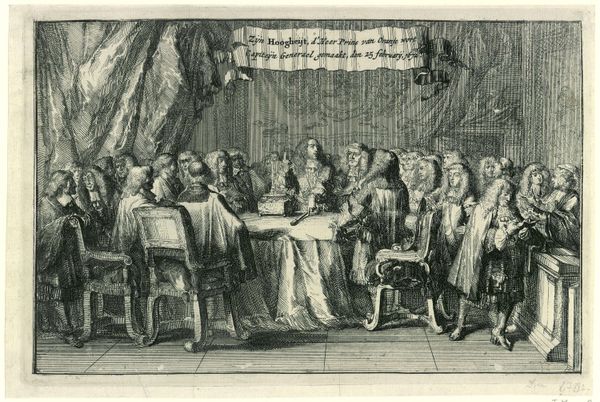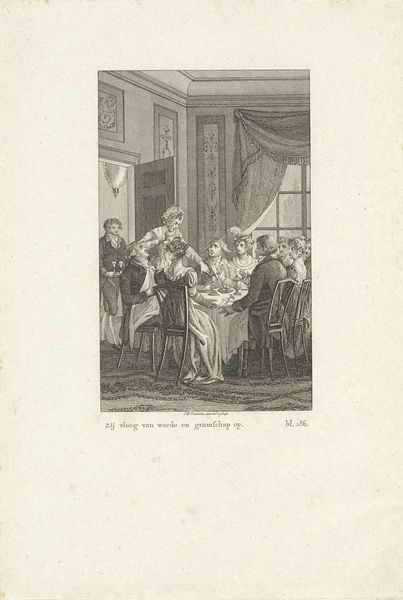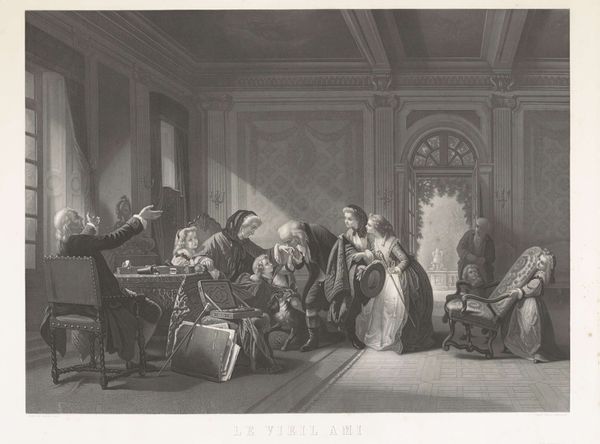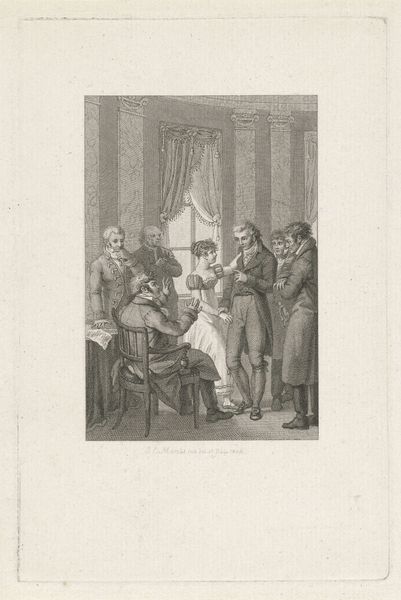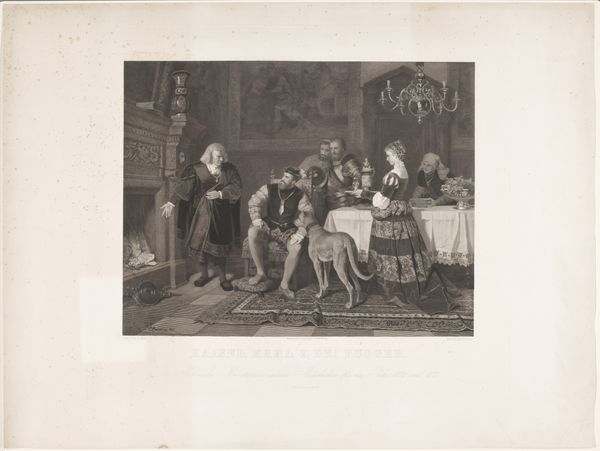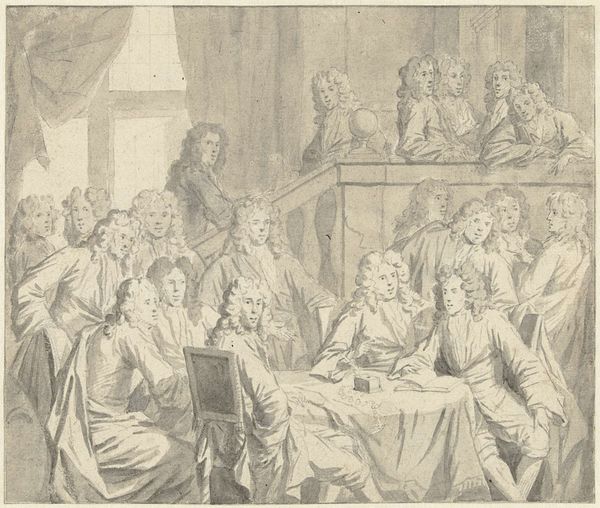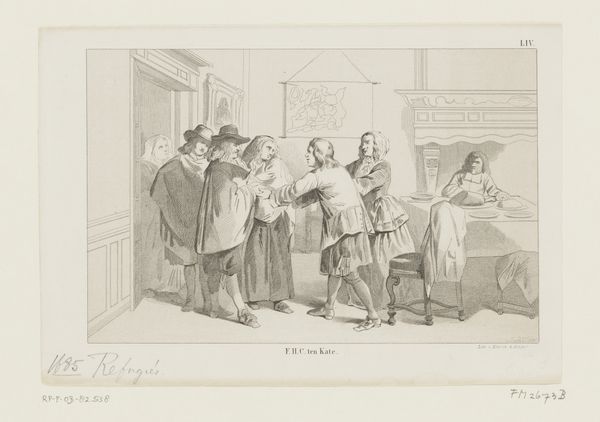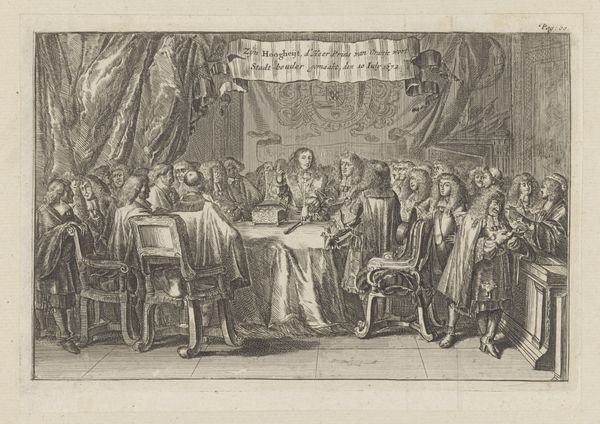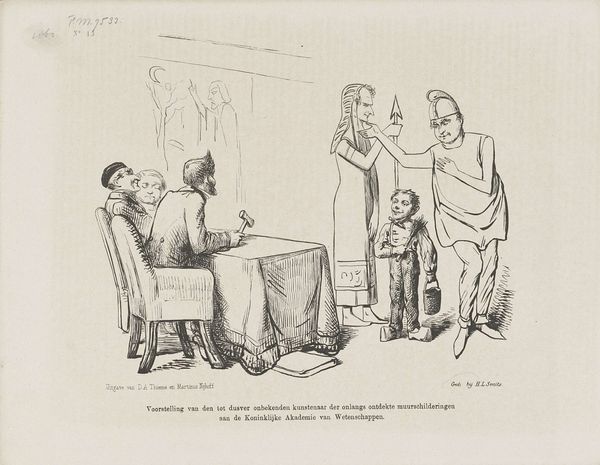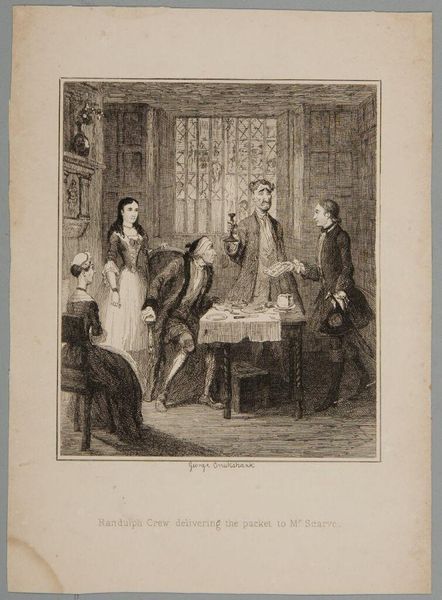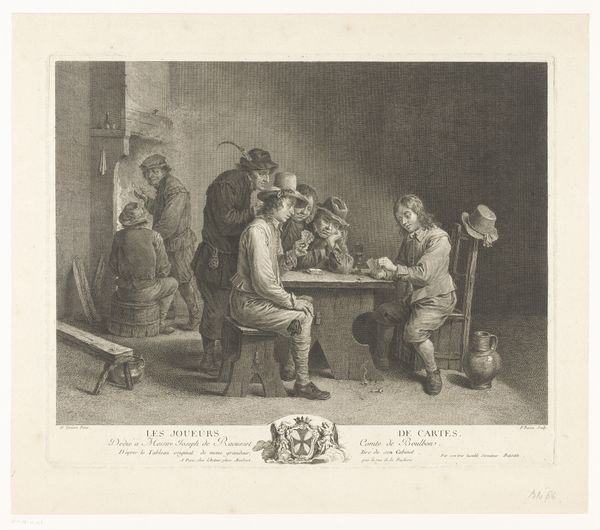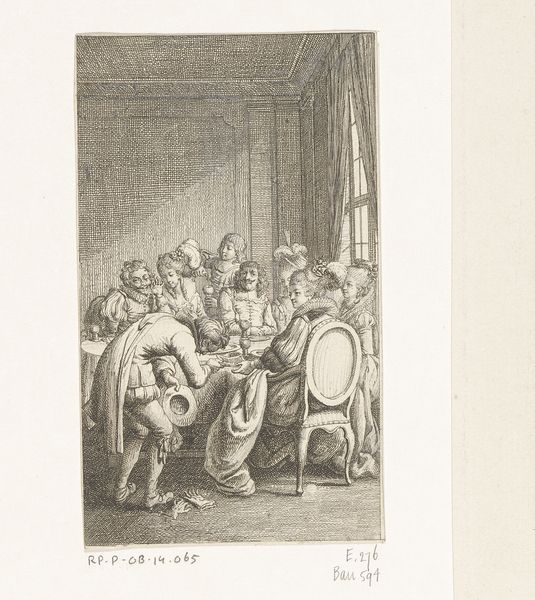
Dimensions: height 159 mm, width 241 mm
Copyright: Rijks Museum: Open Domain
This print, dating to 1678, depicts the signing of the Treaty of Nijmegen. Its anonymous maker worked in a medium intimately tied to the industrial revolution: etching. The process begins with a metal plate, usually copper or zinc. The artist covers it with a waxy, acid-resistant ground, then scratches an image into this coating with a needle. When the plate is immersed in acid, the exposed lines are eaten away, creating grooves. The deeper the lines, the more ink they hold. The plate is then inked, wiped clean, and pressed against a sheet of paper, transferring the image. Look closely, and you can see the characteristic lines of the etching process, which allowed for the relatively quick and easy reproduction of imagery, and was used for centuries to disseminate information, satire, and artistic expression. The technique democratized image-making. Appreciating this artwork, therefore, demands that we consider the social and technological context of its production.
Comments
No comments
Be the first to comment and join the conversation on the ultimate creative platform.
